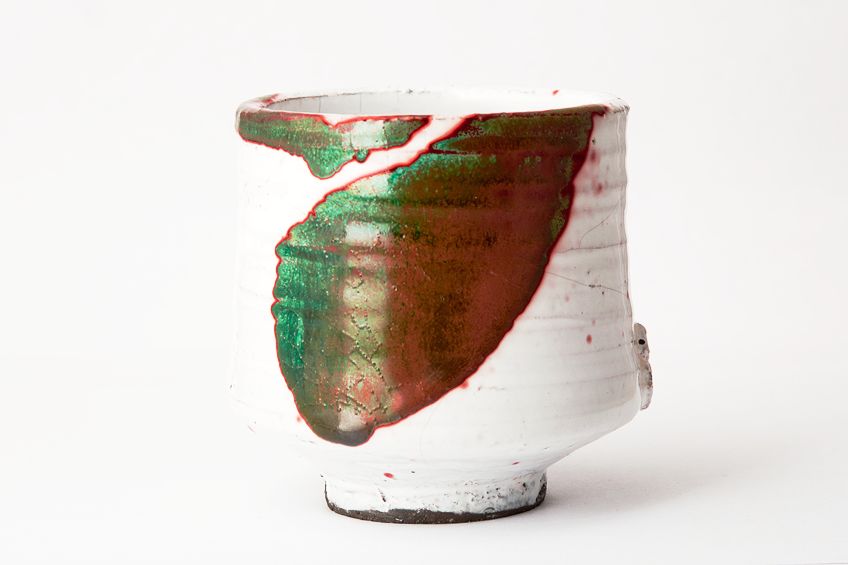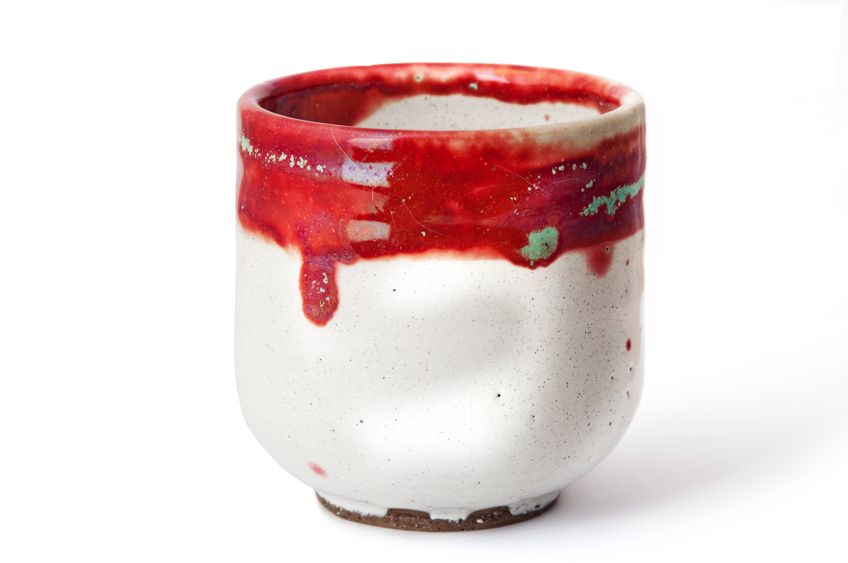What Is Raku Pottery? – Explore the Essence of This Technique
Since its inception in the 16th century, Raku pottery has become popular with amateur and studio potters alike. Have you ever wondered what is Raku pottery exactly, and how it differs from other pottery techniques? Below, we explore the history of Raku pottery, the difference between traditional and Western Raku, as well as the different techniques that are used to create these unique pieces.
Contents
What Is Raku Pottery?
Raku pottery is the product of an ancient Japanese ceramic firing technique established back in the 16th century, called Raku firing. Raku firing is a low-firing process that involves removing the pottery from the kiln when it is at its hottest and cooling it rapidly, which creates a unique finish on ceramics. This is different from the more conventional method, where the pottery is allowed to cool gradually inside the kiln before removing it. Instead of being created on a potter’s wheel, traditional Raku ceramics are also handcrafted.
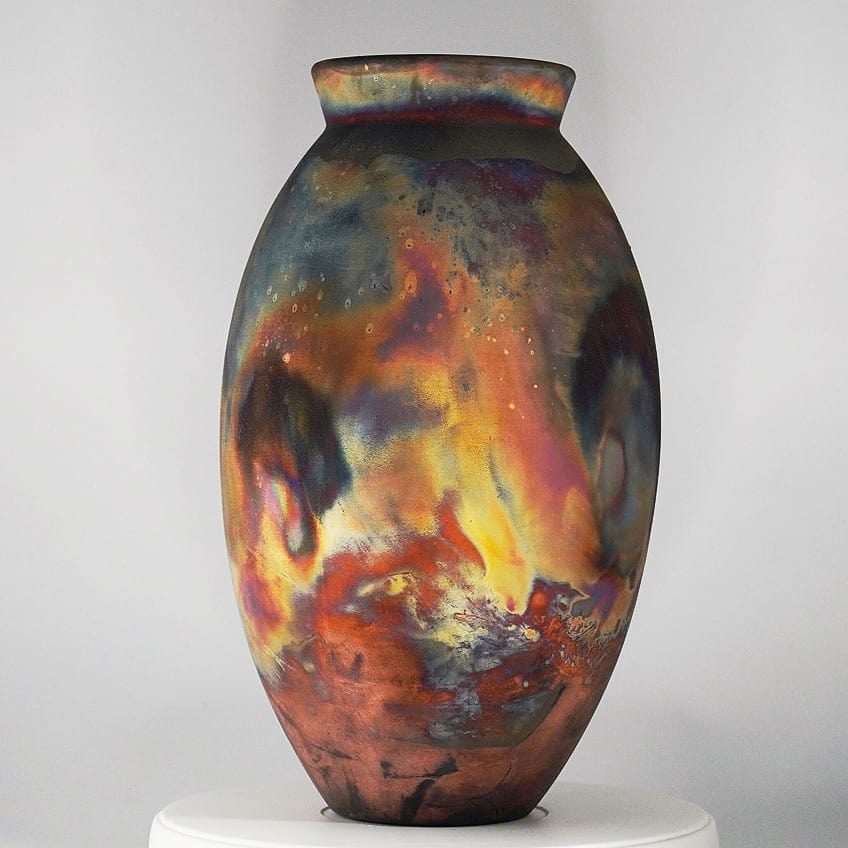
Today, there are two main variations of Raku firing, the traditional Japanese style and the Western style. The Eastern style was popularized in the 1580s and is characterized by removing pottery from the kiln at the height of firing, resulting in it cooling rapidly as it contacts the outside air. The Western Raku firing technique was popularized in the mid-1900s and also involves removing the pottery at the height of firing; however, the piece is then placed into a container holding combustible materials.
A Brief History of Raku Pottery
Raku pottery dates back to the beginning of the 16th century. This pottery was heavily associated with the tea ceremonies of the Zen Buddhist masters of the time. The simplicity and naturalness of traditional Raku pottery embodied many philosophies of the masters of the time and the Raku pottery technique was a favored method for creating tea bowls for their tea ceremonies because of this.
The understated and unpredictable pottery method soon gained popularity as an art form and eventually spread to the West in the early 20th century.
Bernard Leach was introduced to the Raku ceramic process when he visited Japan in the 1900s. Leach then returned with the technique to America. A few decades later, Paul Soldner popularized Raku firing in America, where it has further evolved into its own distinct art form with its own Raku techniques.
Preparing Your Pottery for Raku Firing
There are three main steps involved in the Raku pottery process. Preparing and shaping the clay, bisque firing and glazing your piece, and lastly, Raku firing the piece. Preparing and glazing your piece correctly is very important to ensure the success of your Raku pottery.
Selecting and Shaping Your Clay
Rather than on a potter’s wheel, traditional Raku is shaped by hand using the pinch pot technique. While any clay type can be used in Raku firing, certain clays can give you more consistent results. Normally, potters would gradually increase the temperature of the kiln and allow their pieces to cool gradually inside the kiln to avoid cracking and explosions. The Raku pottery process, however, leaves pieces very prone to cracking due to the quick and drastic temperature changes involved. Below, we discuss some of the different types of clays you can use for Raku firing, and their various pros and cons.
Earthenware for Raku Pottery
Earthenware is low-firing clay that matures at around 1,740 °F to 1,920 °F. This makes it seem like an excellent choice for creating Raku ceramics because Raku firing is a low-fire process, and the kiln typically reaches around 1,650 °F.
There are, however, a few things to consider when using earthenware clay.
As the clay matures at a lower temperature, you may get a very limited carbonization pattern compared to if you used another type of clay. This is because more of the clay body will become vitrified or glossy, and therefore will react less with the carbon that blackens it. If you are looking to achieve intense black patterns in your Raku ceramics, earthenware would not be the ideal choice.
Stoneware for Raku Pottery
Stoneware clay is one of the most popular clay choices for Raku pottery. It matures at a higher temperature than earthenware allowing you to achieve more robust carbonation on your pottery. Stoneware also contains less iron content than earthenware, which can interfere with the carbonation process.
Stoneware is more prone to cracking during western and traditional Raku firing than earthenware, however, some materials can be added to greatly reduce the chances of this happening.
Grog is a widely used additive for clay that makes it more resilient. Grog can be made from various materials including fired and ground pieces of clay, sand, as well as kyanite. These substances act as opening agents, which reduces the density of the clay and creates distance between the unfired clay particles. Grog also will not expand or contract in the kiln as it is already vitrified, which reduces the amount of stress from the Raku process on the piece.
Although Raku pottery is traditionally shaped by hand, some contemporary artists use a throwing wheel to shape their pieces. In these cases, grog can be harsh on the hands, and you may need to opt for finer grog. These are also better to use if you plan on burnishing your piece. As a general rule, approximately one-third of grog should be added to your stoneware clay to reinforce it.
Thicker pieces are more prone to cracking due to the dramatic temperature changes, however, so using a heavily grogged clay or adding additional grog to your clay can reduce this chance.
Porcelain for Raku Pottery
Porcelain is another clay that can be used for Raku firing; however, it is less popular as it has a tendency to crack with the dramatic temperature drops in the Raku method. Just like with stoneware clay, fine grog can be combined with the porcelain to reduce the chances of it cracking, but it is still more likely to crack compared to other clays.
Some potters also ensure that the walls and base of their pieces are thin and even, only fire in summer months to minimize the temperature drop outside the kiln or avoid using horsehair Raku techniques to reduce the chances of them cracking. Many believe that porcelain is not suitable for Raku techniques as the clay does not get hot enough to vitrify and harden, however, it ultimately remains a personal choice.
Raku Porcelain Clay
Raku porcelain is a type of porcelain clay that is specially made to be used with Raku ceramic techniques. The key ingredient in Raku porcelain is Kyanite, which reacts to create Mullite, a crystal that is resistant to thermal shock and refractory. This makes the clay more resistant to cracking when doing Raku methods, however, it can also be more expensive and harder to find than other types of clay.
These pieces also have a lower shrinkage rate that further protects them from cracking.
Raku porcelain is great for making larger Raku pieces, which have an increased risk of cracking due to their size. These pieces are also stronger. Even Raku porcelain can crack, so ensure the walls of your piece have an even thickness and be careful when handling it.
Bisque Firing and Glazing Your Clay
Pottery typically undergoes two firing processes namely bisque firing and glaze firing. Bisque firing transforms raw clay into a hardened and porous piece that is ready for glazing. During bisque firing, all the moisture is removed from the clay and their particles are allowed to bond. This allows the glazes and underglazes that follow to adhere properly and evenly, as well as protect the piece from cracking during the Raku firing. The temperature during Raku firing typically reaches around 1,650 °F during bisque firing and around 1,470 to 1,830 °F during glaze firing, which falls into the cone 010 to 06 range.

The next step is glazing firing. During glaze firing, a liquid glaze is applied to the piece and allowed to dry. After which, it is fired again and the glaze melts creating a glossy coat over the pottery. You can use any glaze for this process depending on the final look you are trying to achieve. You can even dip, splash, or spray your glaze onto your piece to achieve a unique pattern. There are even special Raku glazes available, which have a lower melting point that allows them to completely melt within the limited time they are in the kiln.
Once your glaze starts bubbling, leave the piece in the kiln for another 15 minutes before you finish it off with your choice of Raku technique.
Crackle Glazes
Glazes that are specially formulated to produce fine lines and crackles in your pieces. These markings can come in a variety of colors depending on the metal compounds that are present in the glaze. For example, cobalt will result in dark blue lines while copper can produce either green or red lines depending on the amount of oxygen present during the firing. The exact shade and effect of the glaze is largely dependent on the timing of removal and dousing of the piece.
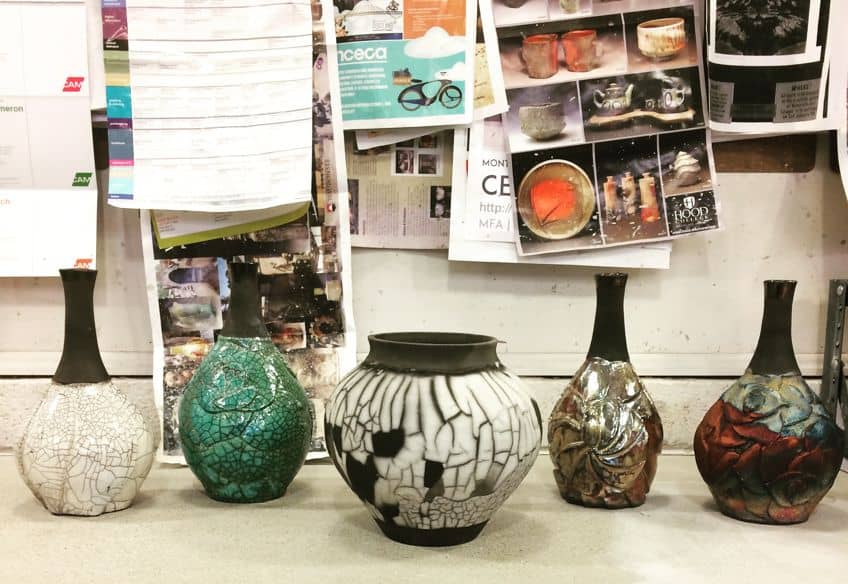
Copper Glazes
These glazes are best used when your piece will be transferred immediately from the kiln to the reduction chamber. This will cause the copper glaze to produce striking flashes of color throughout your piece.
These glazes come in both matte and glossy finishes so can make for some truly unique pieces.
Unglazed Raku
Raku techniques can also be done on unglazed pieces. When unglazed pieces are fired, the oxygen is removed from the clay instead of the glaze, which results in those areas becoming matte black in color.
Best Kilns for Raku Firing
The type of kiln you use can have a big impact on the success and ease of creating your Raku ceramics. Electric kilns heat more slowly but have much better temperature control than gas kilns, so can give you more consistent results.
Downdraft kilns are also more appropriate than updraft kilns for creating Raku pottery as they have a more even temperature distribution, especially if you are making multiple pieces at the same time.
Another important factor about your kiln to consider is how you will load and unload it. Unlike with regular pottery firing, in the Raku method, you will be removing your pieces at the height of firing when temperatures are high. A larger kiln may require you to hunch over putting you at risk, therefore a smaller kiln is better for safety. A kiln that opens sideways is also better than a top-load kiln as it is easier and safer to maneuver the pieces inside and remove them.
Techniques and Processes for Making Raku Pottery
Once your piece has been bisque fired and the glaze has been applied, it can then be put through Raku firing. Raku firing is much more rapid than traditional firing techniques. Raku firing typically takes between one to two hours, while traditional firing can take up to 24 hours. Because of the different effects achieved by the two methods, traditional Raku uses neutral colors such as browns, grays, and black, while Western Raku uses bright metallic colors as well. With all techniques, you are working with very hot materials and possibly hot smoke that can burn and obstruct your vision. Remember to wear the appropriate protective clothing and handle the pieces with care.
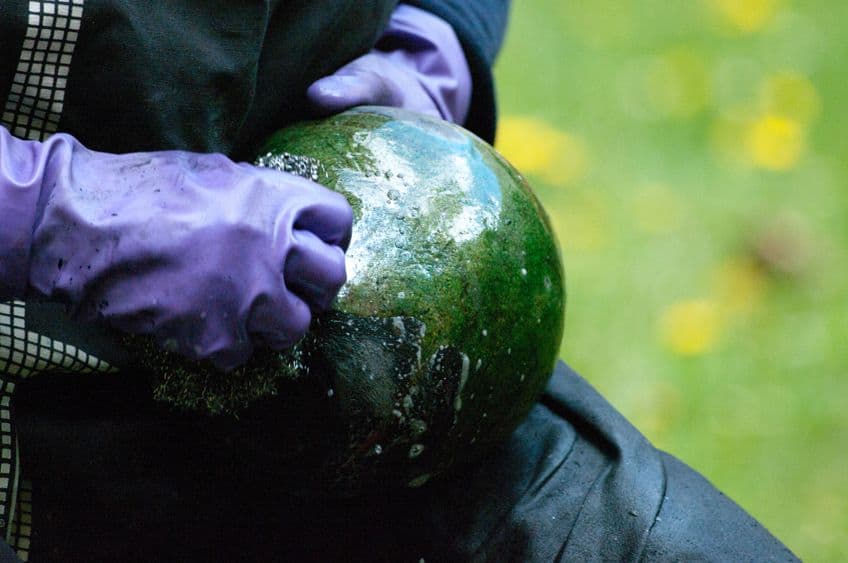
Eastern Raku Techniques
After your glaze has been applied, your piece is then loaded into a cold kiln and heated rapidly. The piece is then heated for around 15 to 20 minutes until it is red hot, and the glaze is bubbling. The piece is then taken from the heated kiln and drenched in water or allowed to cool in the open air. Traditional or Japanese Raku has two main varieties namely Kuro, or black Raku, and Aka, or red Raku.
Kuro is fired individually and at a higher temperature than Aka, which is what gives it its black appearance.
European Raku Firing
European Raku firing includes a technique called Obvara that differentiates it from traditional Raku firing. This technique involves a mixture of flour, yeast, and water that is combined three days prior to firing. Once the piece has been bisque-fired, it is removed from the kiln and dunked into the mixture, and then plunged into water. This technique gives the surface of the piece a unique burnished effect.
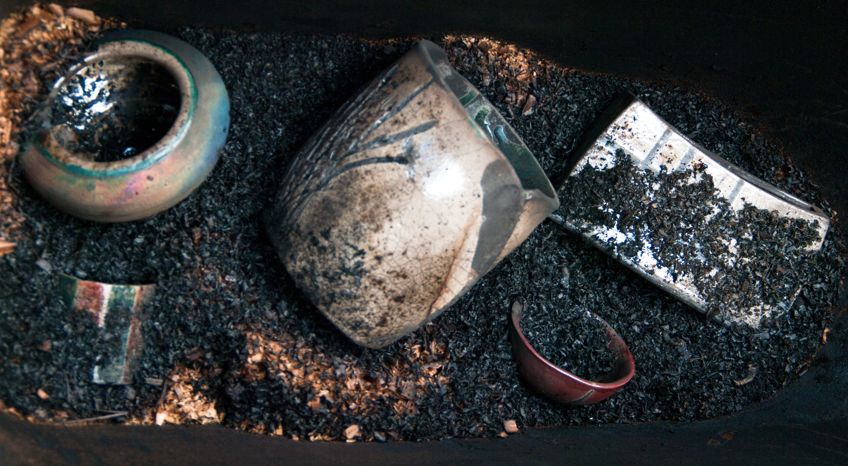
Western Raku Techniques
Western Raku techniques differ from traditional techniques in many ways. In western Raku, the glazed piece is often loaded into a kiln that is already hot and fired for around 45 minutes to an hour to around 1,650 °F. The piece is then removed while still hot and undergoes a process called post-firing reduction, instead of allowing it to cool in the open air.
In post-firing reduction, the glazed ceramics are taken from the kiln while still hot and put directly into a reduction chamber containing flammable material, such as straw, newspaper, or sawdust.
Once the material begins to smoke, the piece should be covered. This starves the pottery of oxygen and results in a myriad of beautiful colors created within the glaze. The vessel containing your flammable material should be just big enough to contain the piece, as the smaller the area around the pottery, the better the oxygen reduction, and the more vibrant the final piece will be.

A metal trash can with a lid works well and is generally inexpensive and widely available. Wait for five to ten minutes for the smoke to stain your piece and color your glaze. Remove the lid and cool the piece by pouring water into the piece. Once the piece has cooled slightly, remove it with tongs as it will still be very hot, and douse it in a bucket of water.
You should be able to see the final look of your finished ware.
Horsehair Raku Technique
Horsehair Raku is a Western technique that is used to decorate unglazed pottery. An unglazed piece is placed in the kiln and allowed to come to temperature. Once the piece has been fired it is removed from the kiln and placed in the open air instead of inside a reduction chamber. Horsehair or another flammable organic material such as feathers are then strategically placed on the piece, which instantly burns and leaves interesting lines and markings on the pottery’s surface.
Wax Resist Raku Technique
Wax resist is a solution of wax that has been suspended in water. The solution is applied to any areas that you want to prevent the glaze from sticking to. Once in the kiln, the heat melts and evaporates the mixture and leaves these areas exposed. These areas turn black from the carbon given off in the firing process and allows you to have some control over the final look of your piece.
After the piece is fired, it undergoes the usual Western Raku techniques such as post-firing reduction.
Characteristics of Raku Pottery
There are a variety of characteristics of Raku pottery that make these types of ceramics unique. The distinctive appearances and textures of the pieces as well as the array of color and glaze variations that they can have, makes these wares desirable and one of a kind.
Raku Ceramic Appearance and Textures
There is very little control over the final look of your piece using the Raku method. No two pieces are the same and you cannot predict exactly how each piece will turn out, and this unpredictability is a factor that draws many artists to this technique. The dramatic temperature fluctuations in this technique also produce crackling within the surface of the pottery, which give these pieces a unique texture.
This is different from cracking as crackling is intentional and limited to the surface, which does not damage the piece. The amount of oxygen allowed during Western firing techniques has a large impact on the resulting color as well as the level of crackling within the glaze. Other effects that you may see on Raku pieces include various metallic effects and black unglazed surfaces.
Raku Ceramic Color and Glaze Variations
The color of the clay used in your Raku techniques can also impact the look of your piece. Darker-colored clays will give your glazes an earthier effect, while lighter-colored clays will create more contrast between carbonized areas and highlight the color of your glaze. Higher levels of iron in your clay will also impact the look of your piece.
Lower levels of iron will produce a warm blush effect throughout your pottery; however, higher levels can interfere with the carbonization process.
Raku Ceramic Fragility and Durability
Stoneware is the most common clay used in traditional Raku as it is less porous and sturdier than other clay types when using the Raku firing techniques. Despite this, Raku pieces remain quite fragile mostly due to their short firing time.
Uses of Raku Pottery
Raku pottery has a multitude of uses as both functional pieces used in cultural practices and as statement art that can be displayed in your home. Although Raku firing produces an exciting variety of unique pieces, these pieces also have a characteristic brittleness that requires careful care and consideration in use.
Raku As Decorative Art Pieces
From the more earthy and muted Japanese Raku to the vibrant colors and effects found in Western Raku pieces, all varieties of Raku pottery can be used as decorative art pieces. Western varieties in particular come in a multitude of shapes and sizes from small bowels to large sculptures.
More monochromatic techniques, such as horsehair Raku, create pottery that are great as statement pieces for modern spaces.
Raku As Functional Pottery
Despite Raku being historically used in ancient tea ceremonies, it is not recommended to use Raku pottery as functional ware. This is because the process used to make Raku pottery leaves them largely porous and fragile. The glaze on these pieces also tends to flake, particularly if there is crackling present. This means that these pieces are unsuitable for everyday use.
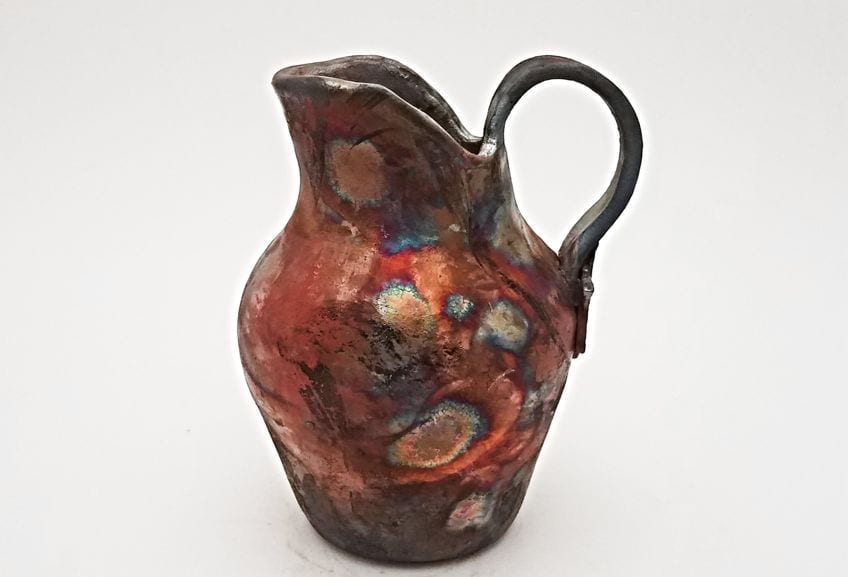
Raku for Traditional and Cultural Practices
Traditional Raku has been used for centuries in Japanese tea ceremonies and forms a large part of the culture. It also has deep spiritual associations, and the process represents enlightenment to many.
Famous Raku Artists
There are many famous Raku artists, however, there have been a few that have driven and developed the artform throughout history. These historical and contemporary artists have shaped Raku ceramics from a simple and fragile pottery to the widespread art form we know today.
Tanaka Chōjirō
| Date of Birth | Estimated around 1516 |
| Date of Death | 1592 |
| Place of Birth | Japan |
| Medium and Style | Ceramist and founder of Raku ware |
| Famous Artworks | ● Muichibutsu (late 1500s) ● Oguro (1550) ● Nisai shishizo (1574) |
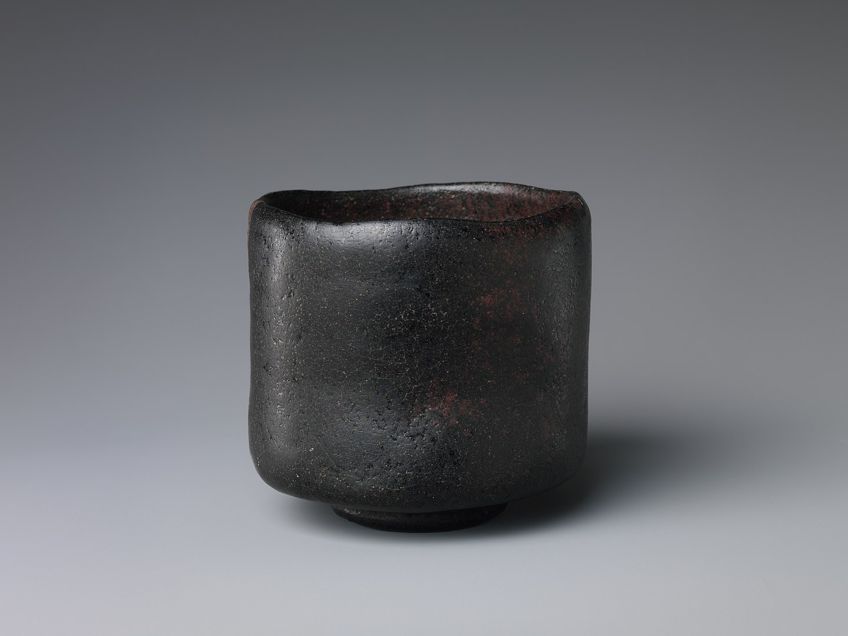
The Raku style was pioneered by Tanaka Chōjirō in the 16th century. Chōjirō was a well-known potter and founded not only Raku ware, but the Raku family as well. Chōjirō created simple hand-molded tea bowls that were red or black and undecorated. These bowls were used in Japanese tea ceremonies and were created to reflect the ideals of wabi.
These bowls attracted attention due to their simple beauty and drove the popularity and establishment of Raku pottery.
Hon’ami Koetsu
| Date of Birth | 1558 |
| Date of Death | 1637 |
| Place of Birth | Japan |
| Medium and Style | Ceramist, calligrapher, lacquerer, craftsman, and painter |
| Famous Artworks | ● Writing Box with Pontoon Bridge (1600s) ● Teabowl (1633) |

Hon’ami Kōetsu was a Japanese artist and craftsman who was considered as the most influential artist of the 17th century. Kōetsu was an accomplished pupil of tea master Furuta Oribe and developed his own style of Raku ware.
The potter’s style focused on thin and delicate Raku ware, and he incorporated his own character into each piece.
David Roberts
| Date of Birth | 1947 |
| Date of Death | N/A |
| Place of Birth | United Kingdom |
| Medium and Style | Ceramist |
| Famous Artworks | ● Monumental vessel (1995) ● Weeping landscape (2010) ● Large eroded vessel (2018) |
David Roberts is a contemporary artist that has achieved international renown for his Raku artistry. Roberts has played a key role in reviving the popularity of modern Raku pottery techniques across Europe as well as its reintroduction in America. Roberts has also been instrumental in establishing the ‘Naked Raku’ movement, which is a relatively new Raku pottery technique.
Raku pottery started out as simple bowls used in the tea ceremonies of the Zen Buddhist masters, but has since developed into an art form practiced around the globe. The beautiful yet unpredictable process of creating Raku pottery has attracted many artists, and it continues to grow and change to this day.
Frequently Asked Questions
What Is Raku Pottery?
Raku pottery is a ceramic that is made using the Raku firing technique. This technique involves rapidly heating the ware and then removing it from the kiln at the height of firing. Traditional Raku pottery is then allowed to cool in the open air, while Western Raku is placed inside a reduction chamber and allowed to react with combustible materials.
How Is Traditional Raku Different from Western Raku?
Traditional or Japanese Raku was established in the 16th century and is characterized by placing your ware in a cold kiln, rapidly heating it, and then removing the piece at the height of firing and allowing it to cool in the open air. Western Raku was developed in the 20th century as an offshoot of traditional Raku methods. There are many different techniques in Western Raku, however, it usually involves placing your ware in a hot kiln, rapidly heating it, removing it from the kiln at the height of firing, and placing it in a reduction chamber where it reacts with flammable materials such as newspaper, straw, or sawdust.
Liam Davis is an experienced art historian with demonstrated experience in the industry. After graduating from the Academy of Art History with a bachelor’s degree, Liam worked for many years as a copywriter for various art magazines and online art galleries. He also worked as an art curator for an art gallery in Illinois before working now as editor-in-chief for artfilemagazine.com. Liam’s passion is, aside from sculptures from the Roman and Greek periods, cave paintings, and neolithic art.
Learn more about Liam Davis and about us.
Cite this Article
Liam, Davis, “What Is Raku Pottery? – Explore the Essence of This Technique.” artfilemagazine – Your Online Art Source. August 18, 2023. URL: https://artfilemagazine.com/what-is-raku-pottery/
Davis, L. (2023, 18 August). What Is Raku Pottery? – Explore the Essence of This Technique. artfilemagazine – Your Online Art Source. https://artfilemagazine.com/what-is-raku-pottery/
Davis, Liam. “What Is Raku Pottery? – Explore the Essence of This Technique.” artfilemagazine – Your Online Art Source, August 18, 2023. https://artfilemagazine.com/what-is-raku-pottery/.


